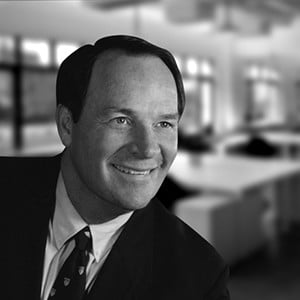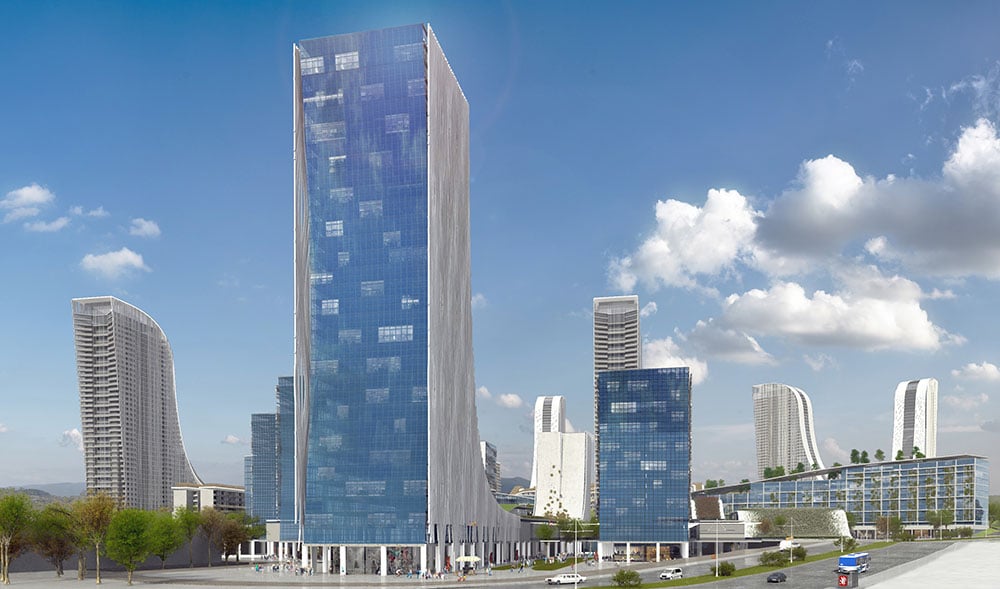Estimated reading time: 4 min
As RMJM celebrates 60 years as a pioneer in architecture, we talked to some of the current generation of trend-setting RMJM architects about the ways in which the profession can change the world.

Chris Johnston
“Architecture is a unique blending of the arts with the sciences as evidenced by its greatest exponent, Michelangelo. Architects who understand this premise can affect the lives of everyday people with their designs, for better or for worse. Hence architects need to have both a passion for their work and the ‘fire in their belly’ to achieve greatness.
Good, thoughtful architecture can raise the human spirit to soaring heights, while bad design can crush the life out of its users. It is incumbent upon the architect to not only understand this, but also to strive to achieve it, ensuring clients understand good design will pay for itself in the long term.
Examples of ‘the good’ can be found in such uplifting spaces as the Sistine Chapel, Hagia Sophia and the Chartres Cathedral. Conversely, ‘the bad’ can be found in such soul destroying spaces as Speers Berlin, the mind numbing work of the Soviet era and the brutalist architecture of more recent times.”

Roberto Tripi
“Architecture is all about creating a good quality environment, regardless of whether it’s a home, office or a big infrastructure project. The space in which you live deeply influences your quality of life; so it’s important you make sure you inhabit a good space.”

Tean Chee Ko
“Architecture affects the way we live. Architecture grew from the human need for shelter, but now it’s a form of identity for culture. As the internet and new technology bring the world closer together, we’re finding more common ground between us. With cultures coming together, they are sharing not just design ideas but the concept of what design means. Architecture can be a platform to make cultures closer, and it is quite a powerful thing. That’s why we like to work on big projects and provide a space for people to come together.”

Jelena Nikolic
“The world has irretrievably changed its speed. As a result, architecture, traditionally defined by the notions of physical realm, must go further beyond the present role. Overpassing its static posture in theory, practice comes with dynamic growth, as with repetition and the readymade (Marcel Duchamp) effect. However unique an architectural gesture is, it can become insignificant in the process of multiplication.
The aesthetics of disappearance (Jean Baudrillard) relies on this, using it to represent the subject through its own absence- lost in the network. It is an important architectural issue and a ground stone where we can start to not just change the world, but make it better. Architecture is about changing the way people relate to a place. Making places that are attached to people, to their culture, their essence and contemporary lives has a deep effect on the world. Much like the design aims of RMJM, architecture must be global and local at the same time.”

Harry Downie
“There needs to be a recognition of what the world is going to need going forward, and which specific clients are helping address the world’s needs moving forward. Understand what they are looking for, and architects need to be able to interpret that and convert it into sustainable products that will meet the world’s needs. What’s obvious at the moment these need are changing dramatically in terms of energy resources. The reliance on carbon fuels will have to change and design will have to reflect new energy efficient models. Architects are going to have to be able to interpret that and incorporate it into the design and produce efficient products that clients are able to use effectively for a realistic period of time.”

Gene Klow
“As Architects, we have both the opportunity and the responsibility to create designs in which the experience of the buildings inhabitants is enriched. Recent research has demonstrated that the healing experience for patients in healthcare facilities is significantly enhanced when they are in a building that provides a nurturing environment. Just as healthcare facilities can improve the sensory experience of a patient, great architecture can not only meet the individual needs of its inhabitants efficiently, it can also uplift the human spirit.”
The one question I would have every architect ask themselves is: “Am I leaving this space better in the end as a result of my work’?”



I really liked the thoughts shared by all, but Ar. Tean Chee Ko and Ar. Chris Johnson’s has been the most striking and hard hitting ones. Being a practising architect from India, we often stumble upon the idea with every architecture project (of ours) that if we have managed to create something unique which will enrich our surrounding environment or will just be a game of mathematical numbers. With surge in technology and globalisation we are of-course in a better world in which we all have the opportunity to be connected, to learn, to share, to evolve our ideas. So I hope together as part of the great architecture field we can come together to make well thought out decisions before building and then we will leave with great architectural marvels for others to cherish.